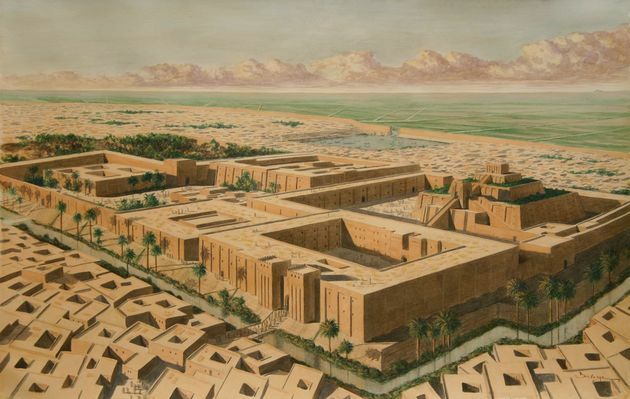The word mesopotamia means "between two rivers" and refers to the city-states, empires, and civilizations that arose between the Tigris and Euphrates rivers.
The Mesopotamian civilization is called the "cradle of Humanity", because peoples who left for the humanity legacies such as the division of the calendar into 360 days, writing, astronomical calculations, among others inventions.
Mesopotamia: location and map
Mesopotamia was the word the Greeks used to indicate the lands between the Tigris and Euphrates rivers.
It currently corresponds to the territories of northern Syria and much of Iraq, ending in the Persian Gulf.

Formation of the Mesopotamian Civilization
Around the year 10,000 BC C., the first human beings settled in the Mesopotamian region, developed agriculture and domesticated the first animals. Thus, the human being stopped being a nomad to become sedentary.
This zone had a fertile land and extended as far as Egypt. Its length, when plotted on a map, resembled the crescent moon and was therefore called
Fertile Crescent.The more food, the more people could eat and live better. Now human beings organize themselves into cities. On the other hand, as the population grew, more space for cultivation was also needed and then disputes over territory began.
However, despite the disputes over land, the different cities began to trade with each other, with the surplus of their crops. Therefore, there was a specialization of tasks among the population and this started to be divided between farmers, warriors and traders.
There were also those who held the key to the sacred, the priests and priestesses. Thus appears the idea of religion, around the year 6000 BC. Ç.
With the growth of cities and commercial exchanges, the need arose to control the products that came and went. Thus, the writing system begins, first, with pictorial symbols, and later, with simpler drawings.
The development of writing marks for many scholars the end of the prehistory. The later period is called Antique.
Major Cities in Mesopotamia
Mesopotamia was the cradle of large cities. We quote some as:
- ur
- uruk
- Nineveh
- Akkadian
- Babylon
- Babel
Mesopotamian Civilization

The area between the Tigris and Euphrates rivers was occupied, about 5000 years ago, mainly by two peoples: the Sumerians, in the south, and the Akkadians, in the north.
Around 3000 BC Ç. significant changes begin in that area with the growth of cities and establishment of the monarchy as a form of government.
The first king to unify the different cities in Mesopotamia was Sargon I. Under his reign, the Mesopotamian cities ceased to be rivals among themselves and formed a vast empire, the first created in the history of mankind
Likewise, the grandson of Sargon I, Narâm-Sîm, was the pioneer in declaring himself a divine being and establishing a cult of his person. Around the year 2200 BC a., this Empire ends due to the invasion of the guti towns.
Summary of Mesopotamian Civilization
People who lived in the Mesopotamian region gave mankind inventions that are used all over the world.
From astronomical calculations to the idea of locking houses with keys, the societies that developed in that area created:
- Agriculture and temple construction;
- Unified weights and measures system;
- Administrative division of the kingdom into provinces;
- Tax payments in the form of part of the harvest;
- Division of the year into 360 days and the week into seven days.
- History Division
- Sumerians
- Chaldeans
- Akkadians
- Questions about Mesopotamia


